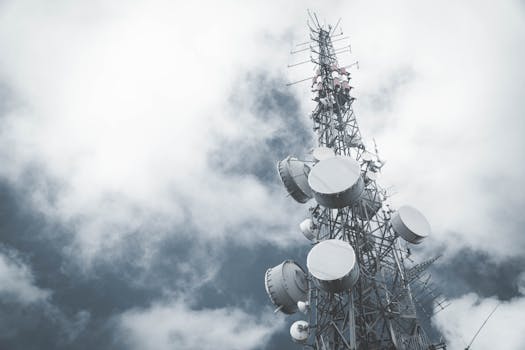
MEO Satellites: The Future of Global Connectivity – MEO Satellites are a crucial part of the global telecommunications infrastructure, providing high-speed, low-latency connectivity to remote and underserved areas around the world. Medium Earth Orbit (MEO) satellites, in particular, have gained significant attention in recent years due to their ability to offer a unique combination of coverage, capacity, and latency.
MEO satellites operate at an altitude of approximately 2,000 to 36,000 kilometers, which is lower than Geostationary Orbit (GEO) satellites but higher than Low Earth Orbit (LEO) satellites. This allows MEO satellites to provide a wider coverage area than LEO satellites while maintaining lower latency than GEO satellites. As a result, MEO satellites are ideal for applications that require high-speed, low-latency connectivity, such as broadband internet, mobile networks, and IoT services.
History and Development of MEO Satellites
The concept of MEO satellites dates back to the 1990s, when the first MEO satellite systems were proposed. However, it wasn’t until the early 2000s that the first commercial MEO satellite systems were launched. One of the pioneers in the MEO satellite industry is the O3b Networks, which launched its first satellites in 2013. O3b Networks’ MEO satellite system provides high-speed, low-latency connectivity to remote and underserved areas, with a focus on emerging markets.
In recent years, there has been a significant increase in the number of MEO satellite launches, with companies like SES, Intelsat, and Telesat launching their own MEO satellite systems. The development of new technologies, such as advanced propulsion systems and satellite antennas, has also improved the efficiency and capacity of MEO satellites.
Benefits and Applications of MEO Satellites
MEO satellites offer several benefits over traditional GEO and LEO satellites. One of the main advantages of MEO satellites is their ability to provide high-speed, low-latency connectivity. This makes them ideal for applications that require real-time communication, such as video conferencing, online gaming, and cloud computing.
MEO satellites are also well-suited for mobile networks, as they can provide seamless coverage and capacity to mobile users. Additionally, MEO satellites can be used to provide broadband internet access to remote and underserved areas, where traditional fiber-optic or cable networks are not available.
Another significant application of MEO satellites is in the IoT industry. With the increasing number of connected devices, there is a growing need for low-latency, high-speed connectivity to support IoT applications. MEO satellites can provide the necessary connectivity to support IoT devices, enabling real-time communication and data transfer.
Challenges and Future Developments
Despite the benefits of MEO satellites, there are several challenges that need to be addressed. One of the main challenges is the high cost of launching and operating MEO satellites. The development and launch of MEO satellites require significant investment, which can be a barrier for new entrants in the market.
Another challenge is the interference between MEO satellites and other satellite systems. As the number of satellites in orbit increases, there is a growing concern about interference and congestion in the satellite frequency bands. To address this challenge, regulatory bodies and industry organizations are working to develop new standards and guidelines for satellite operations.
Despite these challenges, the future of MEO satellites looks promising. With the increasing demand for high-speed, low-latency connectivity, MEO satellites are likely to play a crucial role in the development of future telecommunications networks. As technology continues to advance, we can expect to see even more efficient and capable MEO satellites, enabling new applications and services that will transform the way we communicate and interact.
Conclusion
In conclusion, MEO satellites are a vital part of the global telecommunications infrastructure, providing high-speed, low-latency connectivity to remote and underserved areas. With their unique combination of coverage, capacity, and latency, MEO satellites are ideal for applications such as broadband internet, mobile networks, and IoT services. As the telecommunications industry continues to evolve, MEO satellites will play an increasingly important role in shaping the future of global connectivity.






